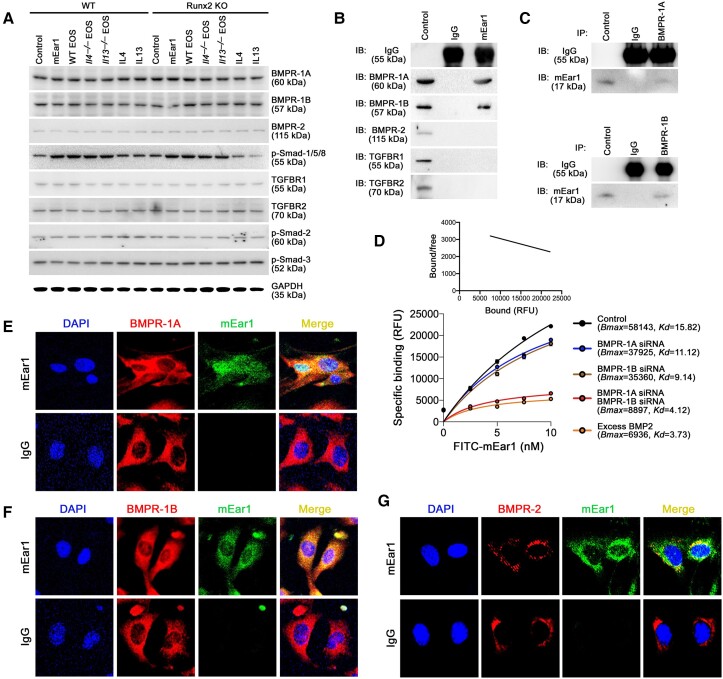Figure 5.
Mouse eosinophil-associated-ribonuclease-1 uses bone morphogenetic protein receptors to activate the smad-1/5/8-Runt-related transcription factor-2 signalling pathway. (A) Wild-type and Runt-related transcription factor-2 KO mouse smooth muscle cell were exposed to osteogenic media with or without mouse eosinophil-associated-ribonuclease-1, interleukin-4, interleukin-13, eosinophil lysates from wild-type, Il4−/− or Il13−/− mice. Immunoblots of different bone morphogenetic protein receptors, TGFβRs, and phosphorylated Smad-2, Smad-3, and Smad-1/5/8. (B–G) Wild-type smooth muscle cell were exposed to osteogenic media for 14 days and stimulated with mouse eosinophil-associated-ribonuclease-1 for 30 min before collection. Immunoprecipitation with anti-mouse eosinophil-associated-ribonuclease-1 (B), anti-bone morphogenetic protein receptor-1A (C, top) and anti-bone morphogenetic protein receptor-1B (C, bottom) antibodies, followed by immunoblotting detection of different bone morphogenetic protein receptors, TGFβRs, or mouse eosinophil-associated-ribonuclease-1. (D) FITC-mouse eosinophil-associated-ribonuclease-1 (0∼10.0 nM) binding affinity and Scatchard plot on smooth muscle cell treated with or without bone morphogenetic protein receptor siRNA or excessive BMP2 (1000 ng/mL). Immunofluorescence double-staining of mouse eosinophil-associated-ribonuclease-1 with bone morphogenetic protein receptor-1A (E), bone morphogenetic protein receptor-1B (F) or bone morphogenetic protein receptor-2 (G).

